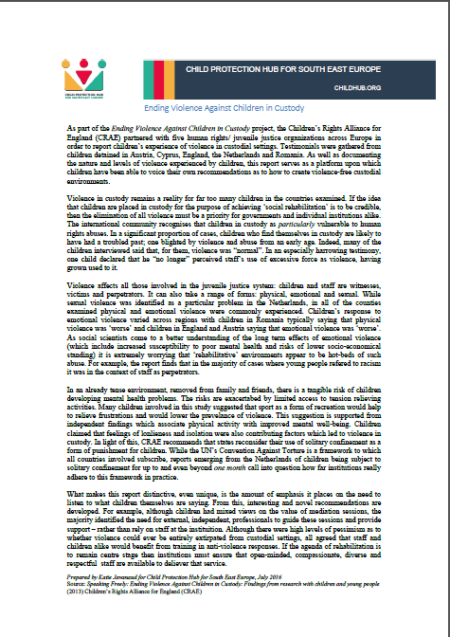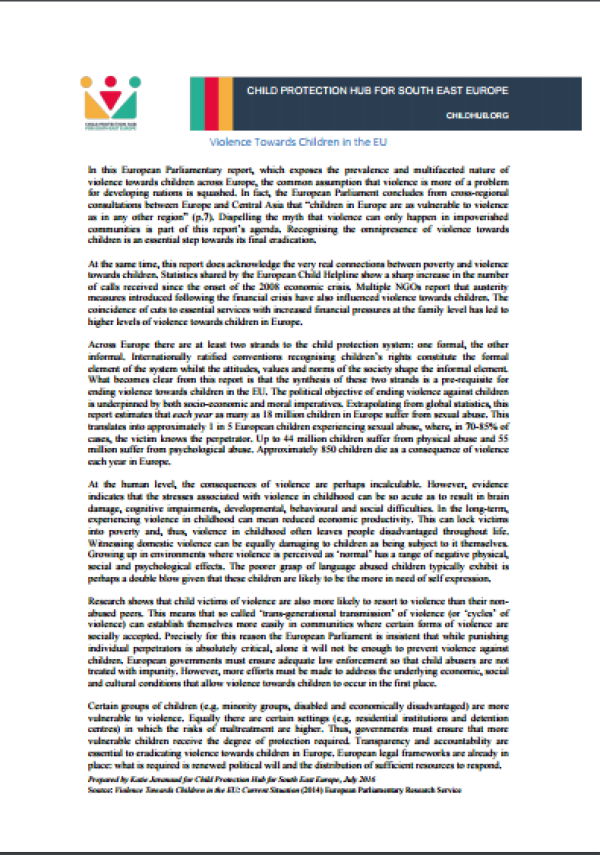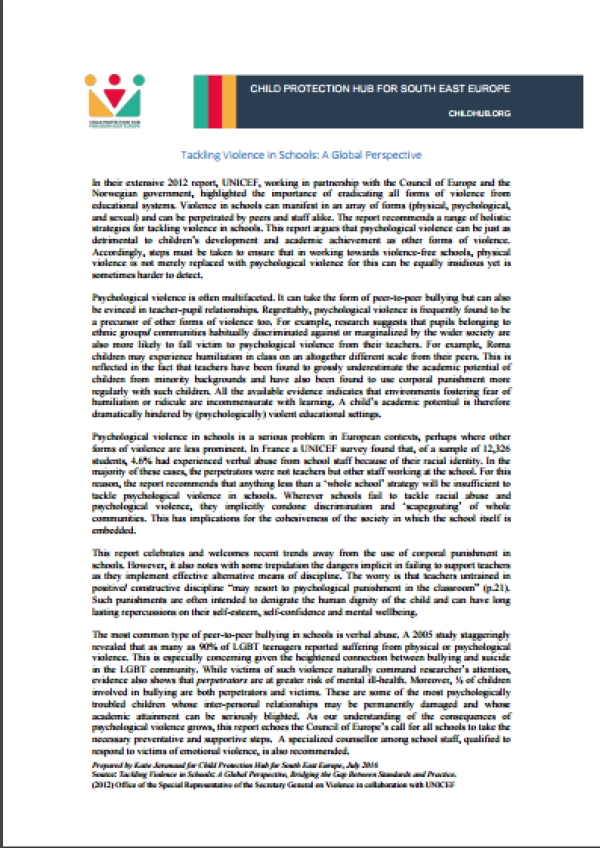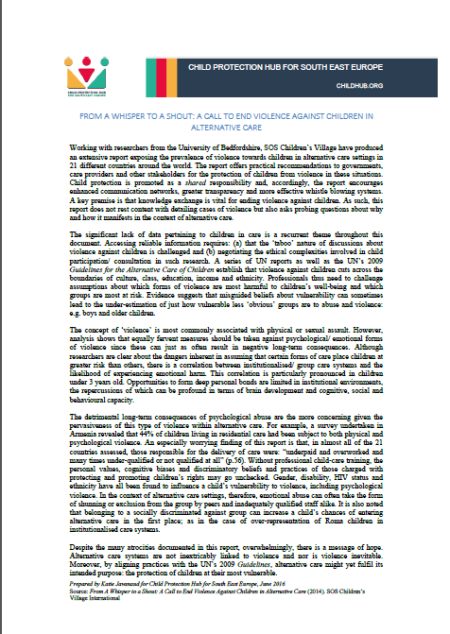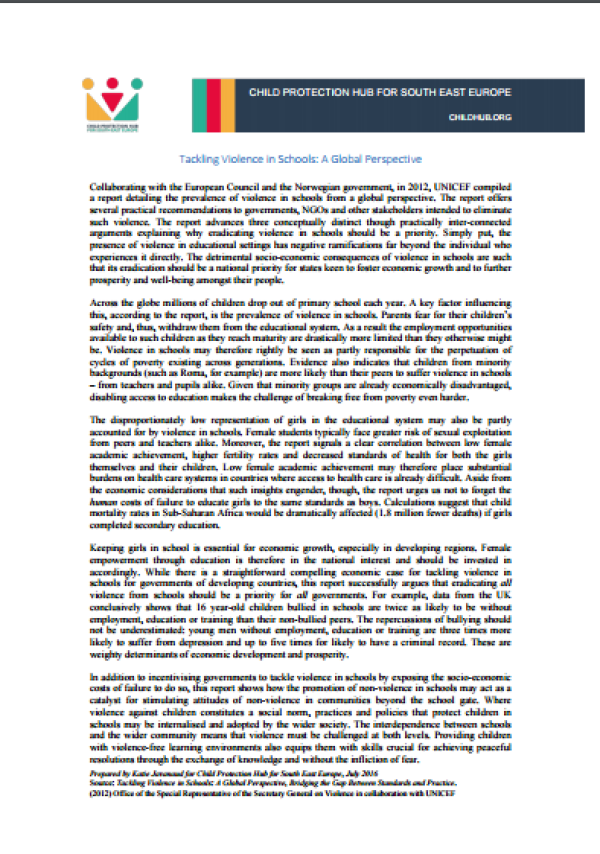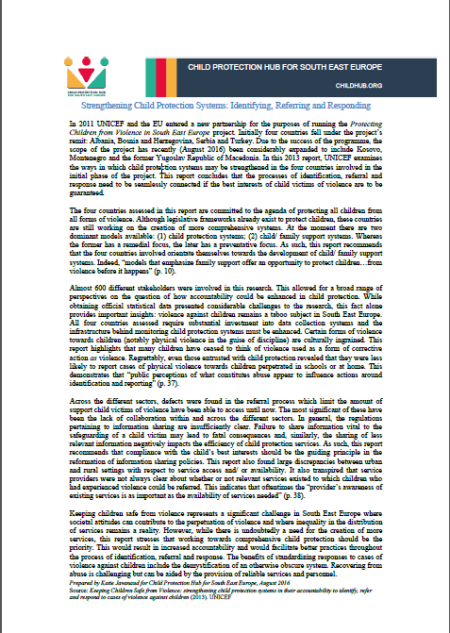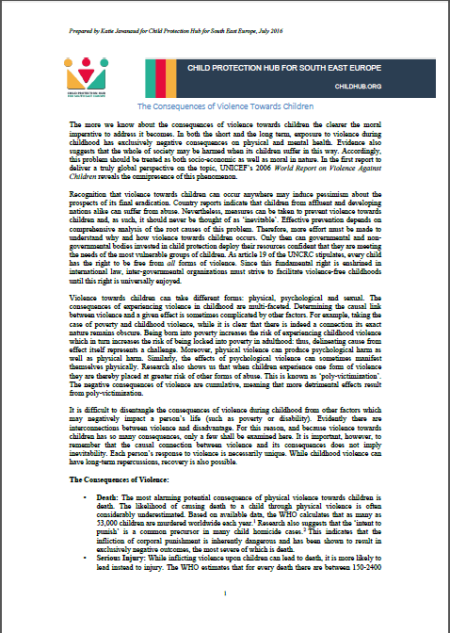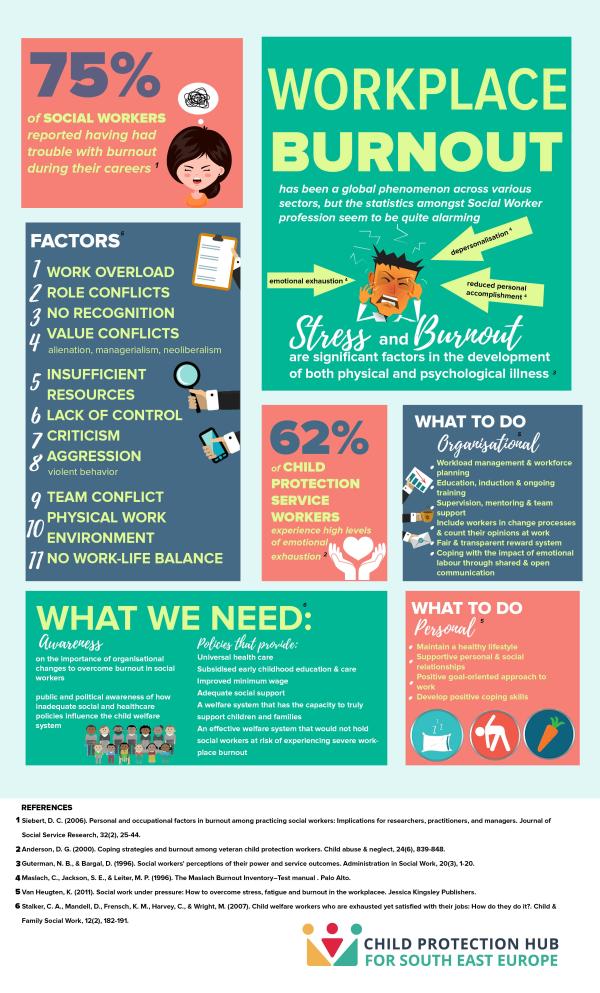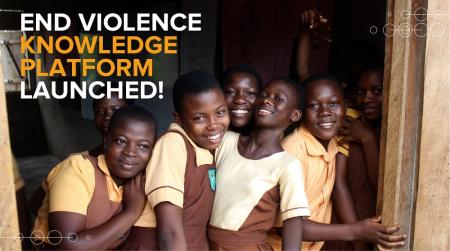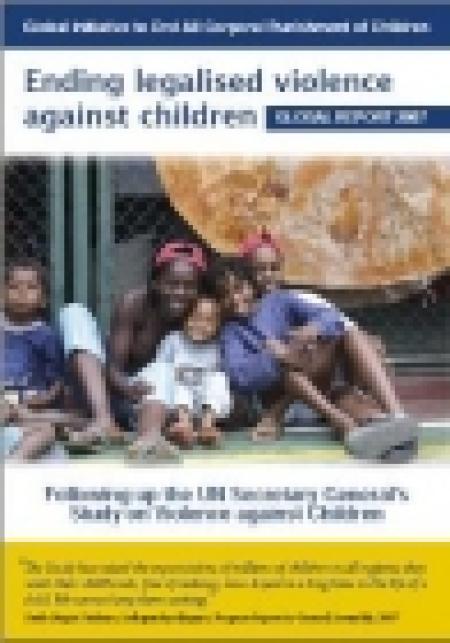
As part of the Ending Violence Against Children in Custody project, the Children’s Rights Alliance for England (CRAE) partnered with five human rights/ juvenile justice organizations across Europe in order to report children’s experience of violence in custodial settings. Testimonials were gathered from children detained in Austria, Cyprus, England, the Netherlands and Romania. As well as documenting the nature and levels of violence experienced by children, this report serves as a platform upon which children have been able to voice their own recommendations as to how to create violence-free custodial environments.
Violence in custody remains a reality for far too many children in the countries examined. If the idea that children are placed in custody for the purpose of achieving ‘social rehabilitation’ is to be credible, then the elimination of all violence must be a priority for governments and individual institutions alike. The international community recognises that children in custody as particularly vulnerable to human rights abuses. In a significant proportion of cases, children who find themselves in custody are likely to have had a troubled past; one blighted by violence and abuse from an early age. Indeed, many of the children interviewed said that, for them, violence was “normal”. In an especially harrowing testimony, one child declared that he “no longer” perceived staff’s use of excessive force as violence, having grown used to it.
Violence affects all those involved in the juvenile justice system: children and staff are witnesses, victims and perpetrators. It can also take a range of forms: physical, emotional and sexual. While sexual violence was identified as a particular problem in the Netherlands, in all of the counties examined physical and emotional violence were commonly experienced. Children’s response to emotional violence varied across regions with children in Romania typically saying that physical violence was ‘worse’ and children in England and Austria saying that emotional violence was ‘worse’. As social scientists come to a better understanding of the long term effects of emotional violence (which include increased susceptibility to poor mental health and risks of lower socio-economical standing) it is extremely worrying that ‘rehabilitative’ environments appear to be hot-beds of such abuse. For example, the report finds that in the majority of cases where young people refered to racism it was in the context of staff as perpetrators.
In an already tense environment, removed from family and friends, there is a tangible risk of children developing mental health problems. The risks are exacertabed by limited access to tension relieving activities. Many children involved in this study suggested that sport as a form of recreation would help to relieve frustrations and would lower the prevelance of violence. This suggestion is supported from independent findings which associate physical activity with improved mental well-being. Children claimed that feelings of lonlieness and isolation were also contributing factors which led to violence in custody. In light of this, CRAE recommends that states reconsider their use of solitary confinement as a form of punishment for children. While the UN’s Convention Against Torture is a framework to which all countries involved subscribe, reports emerging from the Netherlands of children being subject to solitary confinement for up to and even beyond one month call into question how far institutions really adhere to this framework in practice.
What makes this report distinctive, even unique, is the amount of emphasis it places on the need to listen to what children themselves are saying. From this, interesting and novel recommendations are developed. For example, although children had mixed views on the value of mediation sessions, the majority identified the need for external, independent, professionals to guide these sessions and provide support – rather than rely on staff at the instituition. Although there were high levels of pessimism as to whether violence could ever be entirely extirpated from custodial settings, all agreed that staff and children alike would benefit from training in anti-violence responses. If the agenda of rehabilitation is to remain centre stage then institutions must ensure that open-minded, compassionate, diverse and respectful staff are available to deliever that service.


